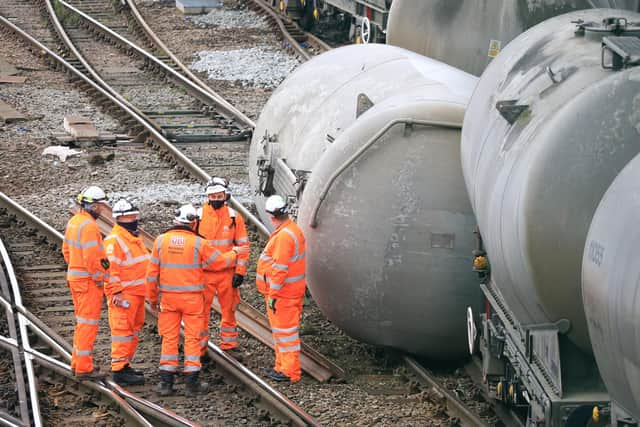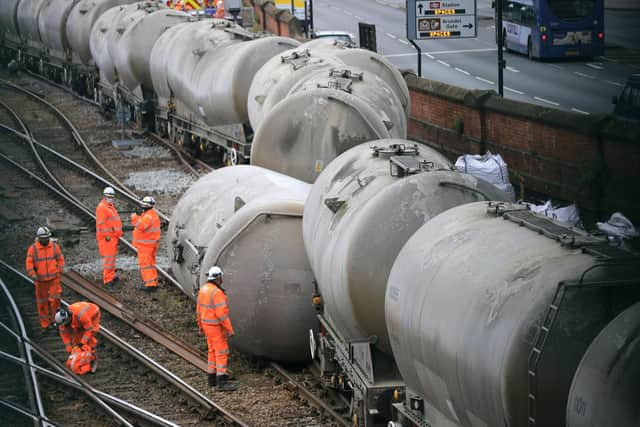Train derailed at Sheffield station due to 'broken screws' on tracks that went unnoticed for months
and live on Freeview channel 276
At 2.44am on Wednesday, November 11, 2020, 16 wagons of a freight train carrying cement powder from Hope, Derbyshire, to Dewsbury, West Yorkshire, derailed at the north end of Sheffield station.
A number of wagons were damaged and there was significant damage to the track, resulting in a partial closure of the station and delays that lasted for days. No one was injured.


Advertisement
Hide AdAdvertisement
Hide AdA report into the accident was carried out by the Rail Accident Investigation Branch (RAIB), and its publication today (October 5, 2021), revealed that the incident was caused by the tracks being too wide due to broken screws.
The investigators who wrote the report said: “The train was coasting through the station at a constant speed of around 12 mph (19 km/h) when the leading right-hand wheel of the twelfth wagon dropped into the space between the two running rails, because the rails were too far apart: a problem known as gauge widening.
“The train stopped when the signaller observed a number of signalling equipment failures indicated on a display screen, and alerted the driver to a problem.


“The track gauge had widened because a number of track screws, that secured the rails and baseplates to the wooden bearers, had broken, allowing the rails to spread apart under the loads from passing trains. The track screws had failed several weeks, or perhaps months, before the derailment, but the failures had not been identified by Network Rail’s maintenance inspection activities.
Advertisement
Hide AdAdvertisement
Hide Ad“Although this was a location with a potentially high risk of derailment, it had not been recognised as such because Network Rail’s guidance for identifying such risk had not been applied. Additional mitigation had therefore not been considered.”
Following the investigation, RAIB has made four recommendations to Network Rail concerning the implementation of processes for identifying high derailment risk locations, the implementation of safety-critical changes to its processes, standards governing fitment of check rails, and track geometry data formats.